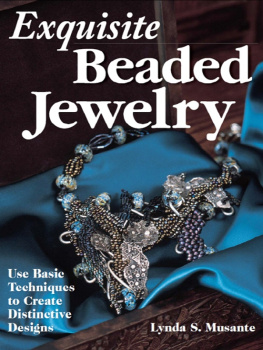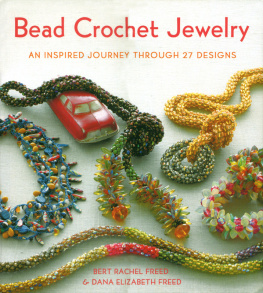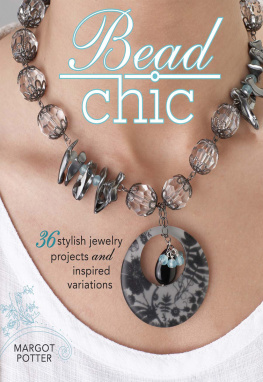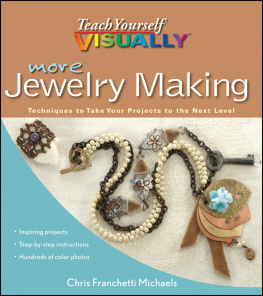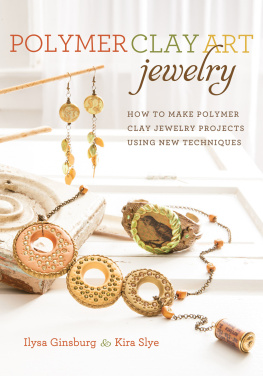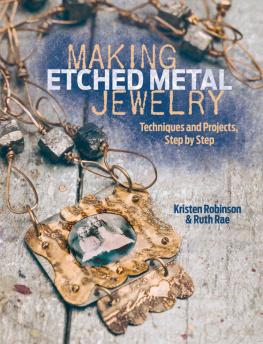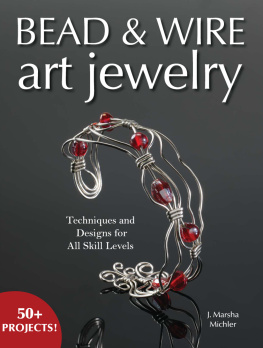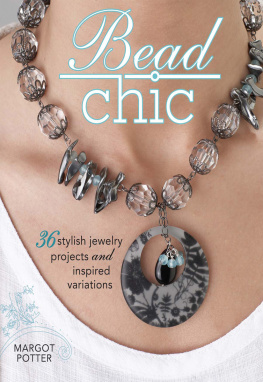Look, Learn & Create
Bead Jewelry 


Copyright 2011
Creative Publishing international, Inc.
All rights reserved. No part of this work covered by the copyrights hereon may be reproduced or used in any form or by any meansgraphic, electronic, or mechanical, including photocopying, recording, taping of information on storage and retrieval systemswithout the written permission of the publisher.
Due to differing conditions, materials, and skill levels, the publisher and various manufacturers disclaim any liability for unsatisfactory results or injury due to improper use of tools, materials, or information in this publication.
First published in the United States of America by Creative Publishing international, Inc., a member of Quayside Publishing Group
400 First Avenue North
Suite 300
Minneapolis, MN 55401
1-800-328-3895
www.creativepub.com or www.qbookshop.com
Visit www.Craftside.Typepad.com for a behind-the-scenes peek at our crafty world!
ISBN-13: 978-1-58923-665-3
ISBN-10: 1-58923-665-3
10987654321
Digital edition: 978-1-61058-149-3
Softcover edition: 978-1-58923-665-3
The Library of Congress has catalogued the earlier edition as follows:
Mitchell, Ann.
Bead jewelry 101 / by Ann Mitchell and Karen Mitchell.
p. cm.
Includes index
ISBN 978-1-58923-451-2
1. Beadwork. 2. Jewerly making. I. Mitchell, Karen.
II. Title
TT860.M58 2009
745.58'2--dc22
2008053951
Photo Coordinator: Joanne Wawra
Copy Editor: Ellen Goldstein
Cover & Book Design: Mighty Media, Inc.
Page Layout: Mighty Media, Inc.
Videographer: WCK Partners, LLC
How to Use This Book
So you love jewelry and have always wanted to try your hand at making some yourself. Designing and making beaded jewelry is very appealing and relaxing. But where do you start? If you go to a local bead or craft store, you will find an endless array of parts and beads, so many that it is often difficult to decide what to look at and what tools, beads, and jewelry parts, called findings, you will need. This book will help you understand basic parts and how to use them, and provide you with ideas and instructions to make your own jewelry projects.
First, a photographic glossary shows different findings, tools, beads, and bead accessories with brief descriptions of each item. This visual glossary is followed by a closer look at how to use the basic tools to perform different jewelry-making tasks. Following the initial overview, project chapters are organized by type of finding. There are three projects designed with each finding to teach you, step by step, how to use the featured part in multiple ways to make beautiful pieces of jewelry. At the end of each chapter is a section on variations, presenting you with examples of how simple changes in bead size, shape, color, or pattern can make a big difference in the way the final piece of jewelry looks. Although the projects suggest specific bead choices, feel free to try alternativesyou will find that the variations are unlimited.
Each project is designed to teach you a new technique or basic skill using the finding featured in that chapter. This concept is outlined under What Youll Learn
Top: Quick reference text. Bottom: Quick referece.
A photograph accompanies the What Youll Need list so that it will be easy to determine what is necessary to make each design. Tips appear throughout the book to give more detailed suggestions that will help you improve your technique. The Quick References are there to clarify words or phrases printed like this. Use this book as a resource for the explanation of different techniques and findings and as a jumping off point for inspiration.
As you build your skills, you will be able to expand into making jewelry using multiple findings and techniques in combination. Experiment with the many available options to express yourself creatively. Beaded jewelry has been made and enjoyed for centuries, so have fun learning to make these projects!
The Basics
Making bead jewelry is a very creative, enjoyable craft but, as with most crafts, you can become frustrated if you dont know which tools and materials to buy and how to use them. Manufacturers cant include all the vital information with their packaging, and there are so many options for materials, tools, and techniques. To give you a firm foundation for learning to make bead jewelry, this section teaches you the essentials about tools, findings, accessories, and beads and shows you all of the basic construction techniques you will use for the projects. If you have never tried making jewelry before, you will appreciate the detailed information and photos. Even if you have a little experience making bead jewelry, you are sure to learn some things you didnt know. So settle back, take your time, and explore the basics.
How to Begin
Jewelry making is fun, though with the myriad supplies available, getting started can be confusing or overwhelming. This chapter breaks down how to approach your new interest so that you will enjoy it and not get in over your head with findings and beads before understanding how to organize your ideas and your supplies. You will learn about how to set up a workspace, what tools you will need for most projects, and how to store and organize your supplies. In addition, an outline of design considerations will assist you in choosing your next project.
Where do you start? Before you go to the bead store, think about the space you will be working in. You will need a few basic items:
A table or other flat surface with enough space to plan your designs
A comfortable chair at the right height for your worktable
A light to see what you are working on
Storage space for beads and findings

Once you have established a work area (which can be portable), you should think about the types of jewelry you would like to make in regard to style and materials. Prior to the bead and findings purchasing trip (to the store or on the Internet), you may want to do a little research by perusing books, magazines, and Web sites for ideas so that you know where you want to start. This book focuses on basic styles constructed with beads of varied sizes and shapes combined with the most commonly used jewelry findings, such as headpins, eye pins, jump rings, beading cable, wire, chain, memory wire, filigree, and additional stringing materials. There is also a chapter on recycling, reusing, and repurposing jewelry parts and beads. The results are attractive, wearable styles that are attainable even to those new to jewelry making. There are also ideas for more advanced jewelry makers. If you are unfamiliar with any of the findings listed, you will find them explained in greater detail in the photographic glossary beginning on .
Next page

